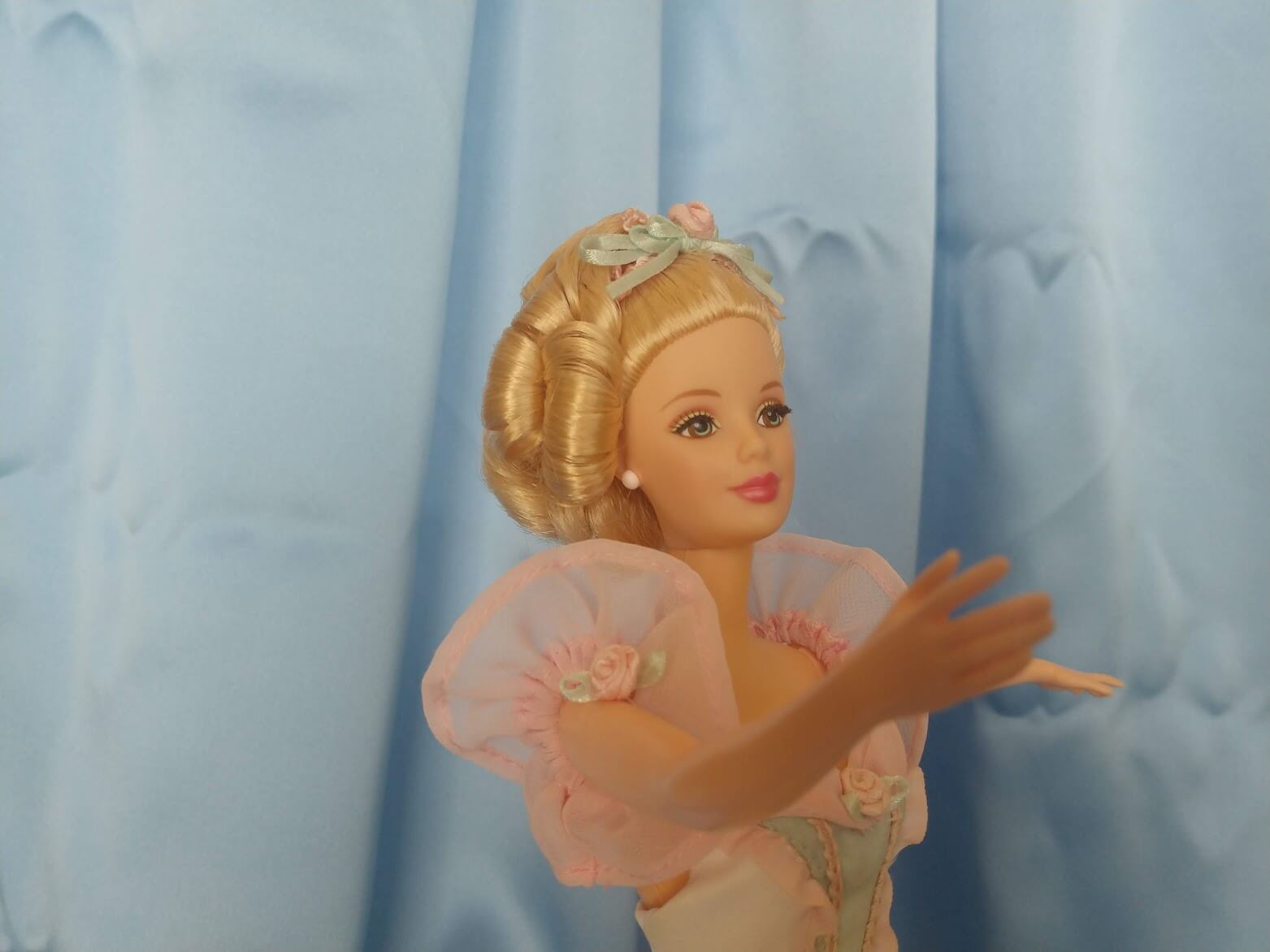At age eleven, I dreamed of one day becoming a Barbie doll designer. Swept off my feet by images of Bob Mackie Barbies I found in books at the library, I decided nothing could be more delightful than sketching my own designs of my favorite toy—what her hair would look like, her clothes, her lipstick! But by the time I reached the end of high school, pragmatism had outstripped girlish fancies, and I settled on electrical engineering.
Was this a case of Barbie helping a girl break into a male-dominated field? Hardly. I had never for a single moment played Barbie engineer, or Barbie at the circuit board, or Barbie in the office cubicle. The very idea would have made me shrivel with horror. Of course, I was aware there were Barbie astronaut dolls, Barbie firefighters, and Barbie soldiers. My sister even had a Barbie president that sported a haircut suspiciously like Hilary Clinton’s ’90s bob. We rather disliked the suit she came with and much preferred the inaugural gown. As far as we were concerned, glass slippers were infinitely superior to glass ceilings.
My sisters and I were also aware of another Barbie world: the pink dreamland featured in the recent Barbie film, a place of perpetual fun and frivolity, and the one that has earned the iconic Mattel doll such universal scorn. This world, we found just as boring as “Career Barbie.” Both worlds, the one bleak, the other vapid, entirely failed to satisfy our growing longings for truth, goodness, and beauty. We wanted to make Barbie do more than call out a helium-voiced “good morning” to a dopey Ken before driving to the hair salon to get ready for a pink disco party; and we instinctively knew that in the career world, we would not find that “more.”
So, we set aside both career Barbie and dreamland Barbie and developed our own unique protocol for what we called “Barbie plays.” Each Barbie play had a distinct theme, usually historically based and fed by our knowledge gained in homeschool history class, literature, and old films.
The Little House on the Prairie books sparked the idea for “Pioneer Barbies” in which Barbie became a pioneer mother named Caroline, Laura, or Mary. Ken was, of course, Pa; we even painted beards onto a couple of our Kens, and they looked great. Barbie cars and a miniature red Radio Flyer wagon became, by a stretch of our lithe imaginations, covered wagons. And we used Barbie horses to tow the freight.
Cecil B. DeMille’s The Ten Commandments inspired countless renditions of “Egyptian Princess Barbies” in which our brothers’ toy aircraft carrier became an ancient barge to carry our Barbies on a Nile River cruise. We used vivid scraps of silk and ribbons to make stunning gowns that would have made Edith Head proud.

Or course we had “Medieval Princess” Barbie plays inspired by fairy tales, Ivanhoe, and The Princess Bride. The trusty Barbie horses (even the one which had lost a leg during a wild gallop in some other play) came in handy once again for various jousting tournaments.
I’ll never forget the night I discovered that I could make a tiny antebellum hoop skirt by shaping a wire hanger into a circle and suspending it from Barbie’s waist with ribbons. No dress actually made for Barbie would fit over that, but my sisters and I didn’t care for most of Mattel’s dresses anyway. We usually left them at the bottom of our Barbie bucket. They were garish and made of polyester so cheap that it hardly looked like fabric. We had a box of dresses our grandma had made us for our American Girl dolls. Some of them were truly exquisite. I draped those big dresses over Barbie’s hoop and found clever pinning techniques to deal with the excess fabric. Actually, the abundance of fabric looked quite historically accurate for antebellum America. I fairly danced with joy to see my Barbie with such a lovely bell of a skirt. The same technique also worked when later, inspired by Baroness Orczy’s The Scarlet Pimpernel, we made elliptical panniers and dressed dolls for the Ancien Régime. We loved to make our bedecked French noble ladies slip through secret passages of the giant French palaces we’d built out of blocks and cardboard boxes.
To give credit where credit is due, Mattel did sometimes produce rather fetching little dresses and accessories. These often came with “Collectable” edition dolls sold for a modest twenty-five dollars at Toys “R” Us.
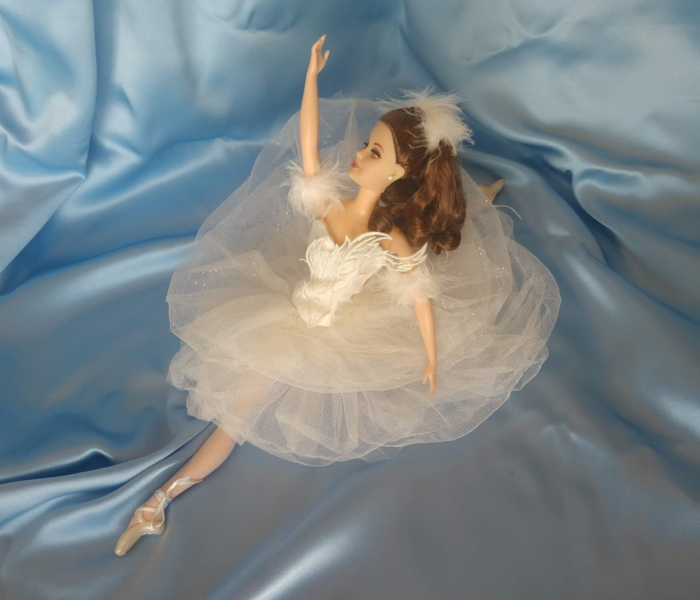
Mattel did an entire tribute to the Nutcracker Ballet, and I received the Marzipan ballerina for my eighth birthday:
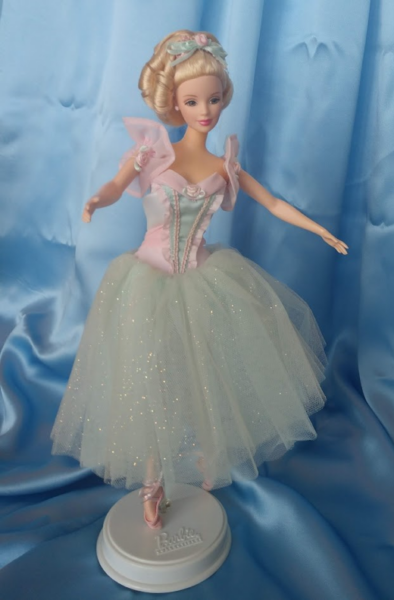
There was also the hugely successful Dolls of the World collection:
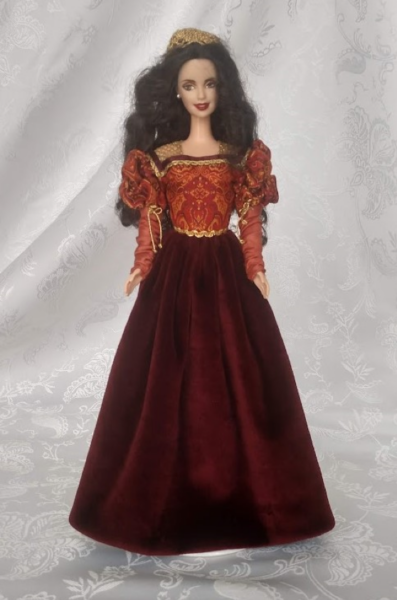
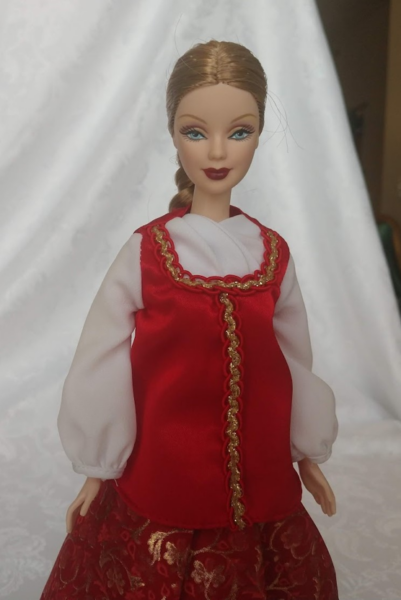
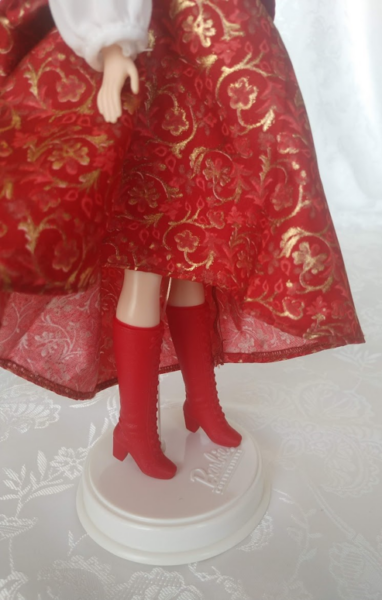
My sisters and I even had a couple of vintage style dolls. We were enamored with the weight of the fabric used in their dresses and the detailed tailoring. Even the boxes were beautiful.
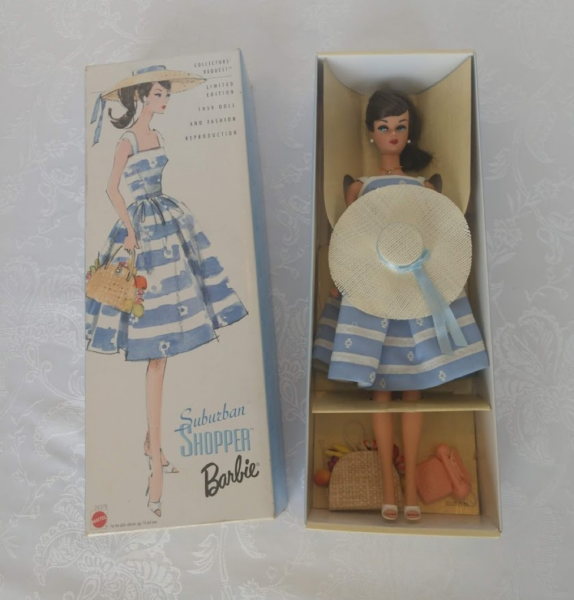
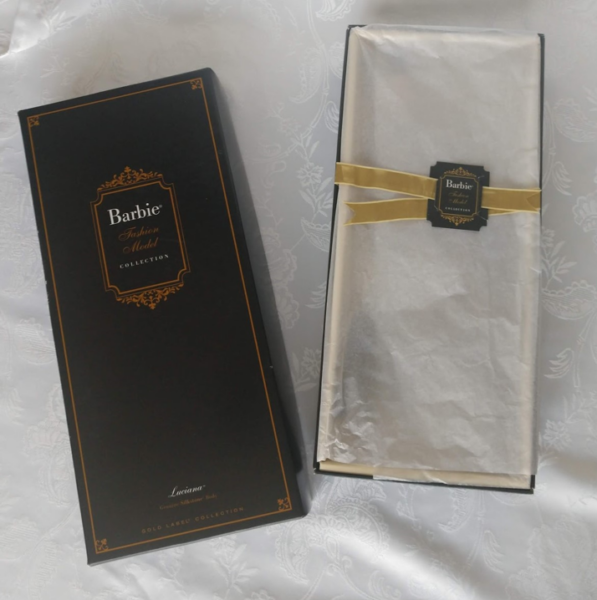
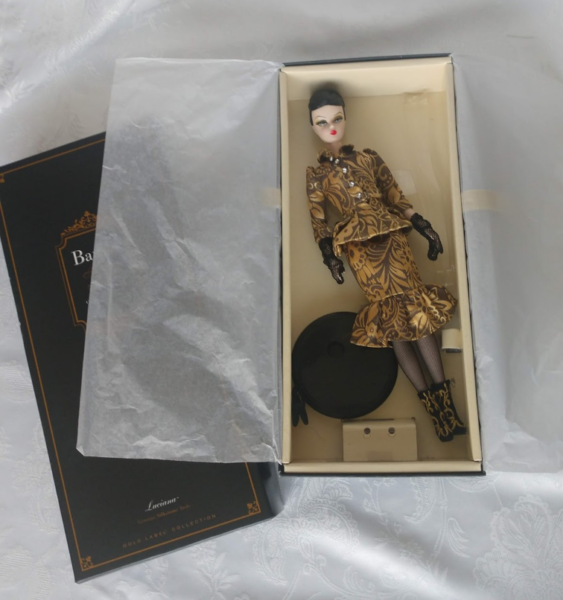
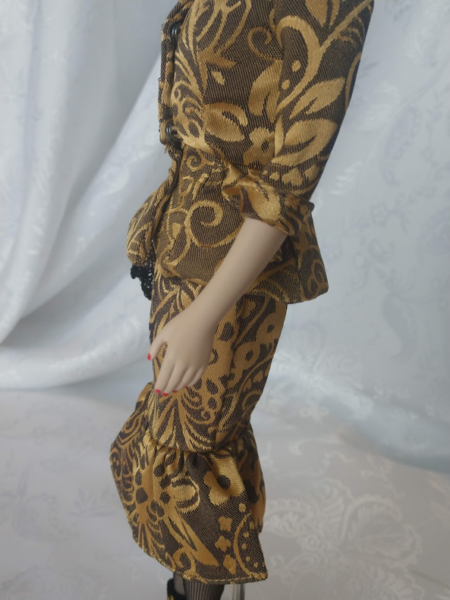
My sisters and I did sometimes have contemporary Barbie plays. But in these, Barbie was a ballerina, or a singer in a variety show, or a young mother with at least three children and her own little house to tend. Occasionally, she owned a quaint bakery. The contemporary play that we loved most was “Big Family Barbies” where we would make one house for a large Catholic family of Barbies and use Skipper, Stacie, Bonnie, Tommy, and Kelly as the younger children. We gave them ultra-Catholic names by randomly opening Butler’s Lives of the Saints for each one. I still remember the frazzled teenage daughter, Benedicta. And there was a Dymphna too. We delighted in the children’s misadventures which were like ours and in their subsequent punishments which were also like ours.
At this point, you might be thinking we were some extremely precocious five-year-olds, but the truth is we had Barbie plays well into our teens. It did help having a baby sister eight and ten years our junior, but I think we would have played even had she not been there. We never felt babyish as we spun our sophisticated tales and constructed elaborate miniature historical sets and costumes. As we grew, we vied to produce ever more beautiful costumes and ever more interesting plots. I remember sitting in the back seat of the van as my mother drove us around on errands considering what my next plot twist would be, or when I would introduce a new character, or when I should bring the earthquake that would reduce my Egyptian palace to rubble.
While other teens haunted shopping malls or dubious online chatrooms, played with Ouija boards, and giggled about pre-pubescent romances, my sisters and I innocently nurtured our creativity; we expanded our imaginations, solidified our knowledge, and in short, deepened our love of the good, the true, and the beautiful. You could say we were strange, or sheltered, or that we didn’t grow up correctly, but Ouija boards and losing one’s virginity in high school aren’t exactly correct either.
We sometimes played dress-up where we ourselves could be the actresses, but we loved Barbie for the same reason the film industry even today in the digital age uses miniatures: you can do a lot more with them. We didn’t have yards of white satin, but we found only a single yard of it was enough to make a queenly train for our Barbie brides. We didn’t have long, thick hair, but we found Barbie’s abundant locks loaned themselves to all manner of braids, ringlets, and even the occasional haircut. She could wear crowns that would have given us headaches. She could fall from a balcony when an evil villain pushed her off. She could even dive to the depths of the ocean (the swimming pool) and get attacked by a shark (toy).
When it came to the hierarchy of dolls, Barbie stood at the pinnacle. It wasn’t because she had breasts, but simply because she was “grown up.” Try playing Pride and Prejudice with a Samantha doll. It doesn’t work. For one thing, there’s no Ken to be Mr. Darcy, and for another, Samantha is a child. All girls know that she’s a child. American Girl dolls at four heads high are roughly the proportions of cartoon characters. There’s a reason cartoon characters are drawn with these proportions: they’re comical. Samantha playing any of the roles we really wanted to bring to life would have been just that: a comedy.
But at seven-and-a-half heads tall, Barbie possesses the graceful height of an ideal adult woman. Did her other impossible proportions make us feel badly about ourselves? We would have laughed at the notion. We didn’t take tape measures to Barbie because we knew she does not warrant literal interpretation any more than do the (it must be admitted) pygmy proportions of the American Girl dolls. Barbie truly represented for us feminine grace in full bloom. Not only was this quality real to us, we believed that we, proportioned just as we were (or however we grew up to be) could one day possess it too. That was why we loved Barbie—big bust, tiny waist, pointed feet, and all.
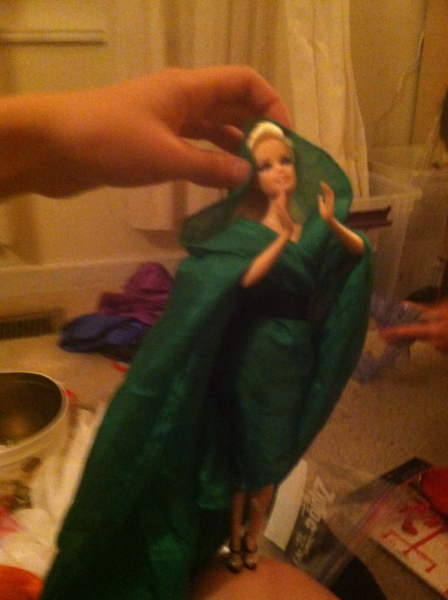
A career in the aerospace industry which spanned nearly a decade took me far from the world of art and creativity that I had grown to love as a child with Barbie. I detested engineering, though it was years before I admitted that to myself. It was dry, impersonal work, and I could never bring myself to care whether my code ran one millisecond faster or not. Then I began moonlighting as a liturgical artist, and I noticed an ironic phenomenon: nothing about my prestigious and lucrative career informed my work in the sacred arts, but old memories of Barbie did. I laughed with sheer mirth as I prepared an ostrich plume crest to crown the tabernacle at a Maundy Thursday Altar of Repose. My fingers remembered after about two decades the very first feather crest they had made; it had been for an Egyptian Pharaoh Ken doll! And if this is a somewhat shocking connection, let’s just chalk it up as a modern-day case of despoiling the Egyptians.
The glass pendants I wired to freshwater pearls from one of my own bracelets were, this time, not for a towering hair sculpture of a Barbie of the French Court, but to drip exquisitely from shining candelabra stationed around the Eucharist.
And draping the finest silks to design Passiontide veils, antependiums, and chasubles still brings me back to those days I would throw old scraps of polyester over cardboard to be tapestries in cavernous medieval castles.
Of course, when I dress myself, I think of Barbie too. The memories are in my eyes, the way I see and select clothing, in my fingers, in how I arrange and tweak, and in my heart, the risks and adventures I’m willing to take in the quest for truly beautiful dress. Even just tying a sash can connect me to the massive (at least in Barbie scale) trains on some of those little gowns I designed. When I helped a friend design her wedding dress and hoop, I thought of that night I made my first miniature Southern Belle.
Finally, how could I deny what Barbie taught me about storytelling? She taught me not to merely consume entertainment; after reading books and watching movies, I had to pick her up, build her a house, dress her, and tell my own stories. I had to think and scheme because good plots require planning. I instinctively learned to avoid red herrings and deus ex machina sensing that these were silly and cheap. I knew that high drama requires a worthy set and good dialogue requires a good vocabulary. My sisters and I loved to make our Barbies argue! Sometimes they hurled nasty insults at each other that would have made adults laugh. To this day, I credit most of my public speaking skills to playing with Barbie dolls. When your character is in a battle of wits to save her neck from the guillotine, both tongue and intellect tend to sharpen quickly.
All of this, I see now, sprang from the innate human love of form, the elusive form coveted by every great novelist and brought to birth in every great novel, the form that represents reality in all its shining splendor.
But one might protest, Barbie herself is no friend of culture and beauty, but rather a typical product of post-modernity: plastic, mass-produced, and except for a weak joint at the neck, virtually indestructible. How can such a toy be good for the cultural formation of girls?
Perhaps Barbie is a sort of crutch or bridge. Like the wardrobe to Narnia, she can help girls return to other worlds, worlds that hold beauty and femininity in higher esteem. Barbie’s plastic nature and Chinese-factory origins matter very little to girls busy spinning tales of romance and chivalry. And when they return from their worlds of play, young women will see their own world as ripe for restoration; they won’t go looking for pink moon suits, pants suits, or, as Barbie in the film, their gynecologist; they’ll go looking for beauty, the splendor of the truth.
Tips for Mothers:
- Over the years Mattel has made many Barbie variations. Most of the Barbies made today are expensive, of poor quality, and ugly to boot. Should you decide to buy Barbie dolls for your daughters, look for pre-owned dolls from the ’90s, early 2000s, or even older. Websites like eBay and many thrift stores are loaded with suitable Barbies.
- Some of Mattel’s dresses may be adequate, but provide your daughters with ample scraps of fabric, pins, and ribbon to let them design their own dresses for their Barbie dolls. You may find larger doll dresses of satin, cotton, or lace at thrift stores that can be pinned or tacked to fit a Barbie for a beautiful historical costume.
- Provide your daughters with a set of blocks or at least some cardboard boxes and a few pieces of doll furniture. It’s a myth that children are perfectly happy playing with “two sticks.” They need something to help them get started building up little worlds for their Barbie plays. They also need space. Let them have the basement or the attic or their rooms. Don’t make them clean up if they’d like their play to span several days.
- Finally, don’t panic if your girls decide to cast villainous characters and imperfect heroines in their plays. As long as you have guarded them from impure books and films, and taught them appropriate behavior and language, their stories will be appropriate and innocent. Children don’t play what they don’t know.


